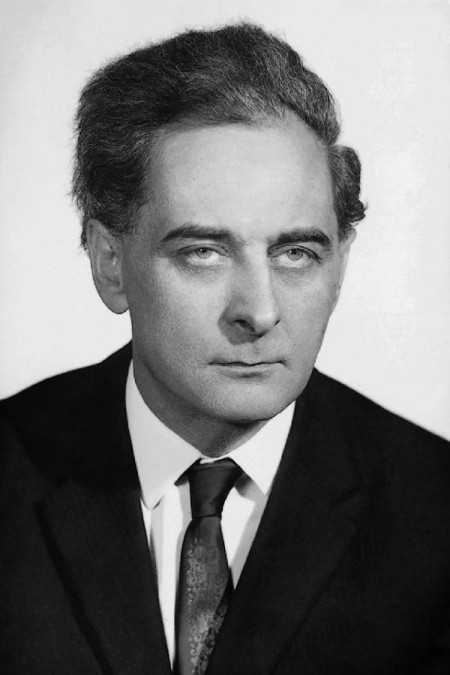
22 July 1924, Budapest – 6 April, 1993, Budapest
He was a pianist par excellence. Mihály Bacher entered the piano course of the Music Academy's practice school at the age of nine, at first as István Pajor's pupil in Irén Senn's class, and then as Éva Baráth's pupil in the class led by Arnold Székely. At the preparatory class his master was Imre Keéri-Szántó. Up to the age of fourteen, he attended the conservatory in Semmelweis Street, where Magda Vásárhelyi and Ernő Szegedi taught him. In the National Conservatory he was György Faragó's pupil. After Faragó's death, he continued his studies with Béla Böszörményi-Nagy at the course for the training of artists at the Music Academy. Bacher gave his first public orchestral concert while still at the Academy (3 April 1946), and in the same year was successful at the Geneva competition. He gave his diploma concert on 22 December 1947. The Music Academy yearbook preserved his programme: Brahms-Handel: Variations; Beethoven: Sonata in C minor, Op. 111; Schumann: Fantasia in C major.
Bacher made his first recording in 1952, and in the same year received the Liszt prize for performing and recording Liszt's Totentanz (The dance of death). From that time till 1987 he was the National Philharmonic's soloist.
The year 1956 brought him a considerable success, winning second place at the International Liszt-Bartók Piano Competition (the first prize was given to Lev Vlasenko, the third to Lazar Berman). In an interview after the competition, Bacher, who was by then giving fifteen-twenty concerts a year, said that the positive aspect of this type of test was that the total concentration made the competitor produce a performance which in other circumstances he might not be capable of. He thought that the greatest benefit of the competition was that Hungarian artists who otherwise hardly ever appeared on a concert podium could also participate, and acquitted themselves well. He summed up the lesson to be learned as follows: "More, much more acknowledgement and concert opportunities must be given to those lower and medium level music teachers who have graduated from the Academy, whose talents – as the competition demonstrated – we make scant use of."
Between 1956 and 1958 he cut a solo recording each year (Liszt, Beethoven), then in 1960 the first joint recording with his regular chamber music partner, Dénes Kovács, was published. After three-three Mozart sonatas they recorded two Beethoven sonatas.
In 1959 he was awarded a second Liszt Prize. In 1962 Bacher became a teacher at the Music Academy; from 1976 to his death with the rank of university professor.
From 1963 onwards his solo recordings followed one another (Ferenc Szabó: Liberated melodies – Felszabadult melódiák; Brahms: Variations and fugue on a Handel theme, and works by Beethoven). By 1977 he had recorded fifteen Beethoven sonatas, the Op. 126 Bagatelles, and the Eroica variations. In 1973-74 Hungaroton published all the Beethoven violin-piano sonatas, performed by Dénes Kovács and Mihály Bacher. In 1973 he was awarded the title, Meritorious Artist.
Besides making recordings, his name became internationally known also as a concert artist. He was among the first Hungarian artists to perform in China and Japan. But no less valuable was his work in educating the public and developing artistic tastes, a task he carried out like a mission, giving solo performances, or appearing as soloist for provincial orchestras all over the country.
In 1982 he received the gold grade of the Order of Labour. He made his last recording in 1983 (István Sárközy: Confessioni).
K. F.


